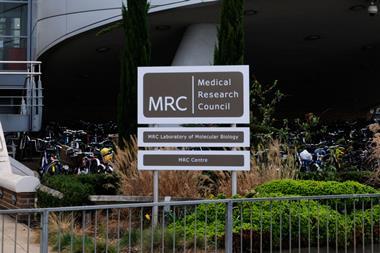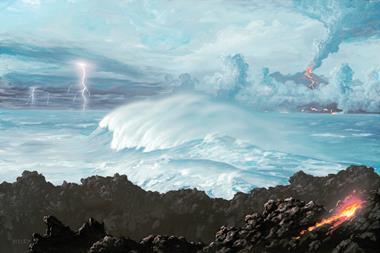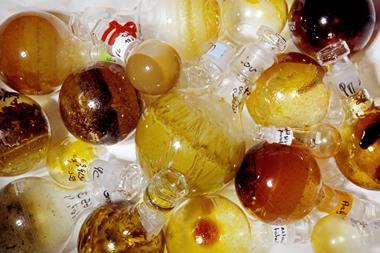Researchers in the US have used the chemistry of four billion-year-old zircons to infer that the hydrothermal fluid from pools that may have incubated the first life on Earth was more oxidised than previously thought. The findings deepen our understanding of the chemicals available for prebiotic synthesis on Earth, and could aid the study of other planets too.
The earliest accepted evidence for life in the fossil record is 3.48 billion years old, but the times, settings and, crucially the mechanisms of life’s prebiotic beginnings remain uncertain. Such chemistry would have needed an aqueous environment, and the most likely candidates are hydrothermal pools akin to those in Iceland and Yellowstone national park in the US, today. The chemistry of these pools around four billion years ago, however, is poorly understood, which makes modelling plausible reactions difficult.
Dustin Trail of the University of Rochester in New York and Thomas McCollom of the University of Colorado studied zircons from Jack Hills in Western Australia – some of the oldest minerals on Earth. The crystallisation temperature of a zircon is revealed by the amount of titanium incorporated into the lattice. Based on this, the researchers deduced these zircons had crystallised at around 580°C – too cool to form directly from igneous melts. Instead, they were the result of subsequent interactions of the rock with fluid: ‘The fluid that was responsible for this interaction likely came from the surface. Volcanic rock is really quite porous,’ explains Trail. This provided a treasure trove of information.
Zircons can incorporate cerium ions, for example, but they are more likely to incorporate Ce4+ than Ce3+. They can also take up chloride ions. And data on these ions can reveal both the redox potential and the salinity of the hydrothermal fluid. Trail and McCollom therefore synthesised zircons in the laboratory, controlling these parameters and measuring the properties of the resulting zircons ‘to provide us with information on what these natural zircons are telling us,’ says Trail. They concluded that the hydrothermal fluid must have been only about 30% as saline as sea water today and more oxidised than the surrounding mantle.
The researchers modelled how the fluid’s composition would change as it rose to the surface and cooled. Under these relatively oxidised conditions, they argue that manganese, which is rarely considered as a catalyst in prebiotic chemistry, would be the most abundant metal, and zinc and nickel would be at a much higher concentration than copper. This favours models relying on these, and poses problems for models relying on copper as a primordial catalyst, such as some from molecular biologist John Sutherland’s group at the University of Cambridge in the UK, they argue. The researchers now hope to gain insights into conditions even further back in Earth’s history.
Astrobiologist Laura Rodriguez at the Lunar and Planetary Institute in Texas, US, is impressed by the study. ‘To me, the most significant feature is that they’ve made a redox calibration to get the fluid geochemistry of these 3.8 or 3.9 year-old fluids,’ she says. ‘There’s evidence that there was water 4.2–4.4 years ago, but that’s all we can say. This is the first paper trying to get at the chemistry of those fluids.’ She hopes the zircon analysis may prove useful for analysing samples brought back by Nasa and the European Space Agency’s Mars sample return campaign. Trail says they themselves are thinking further afield, contemplating whether the modelling might provide insights into what hypothetical hydrothermal pools could potentially look like on exoplanets.
Sutherland, however, is skeptical: ‘I think the authors of the paper are reading an awful lot into their zircon analyses – it’s almost like reading tea leaves.’ He notes – and Trail accepts – that some models from his own group are perfectly consistent with the researchers’ findings.
References
D Trail and T M Mccollom, Science, 2023, 379, 582 (DOI: 10.1126/science.adc8751)












No comments yet